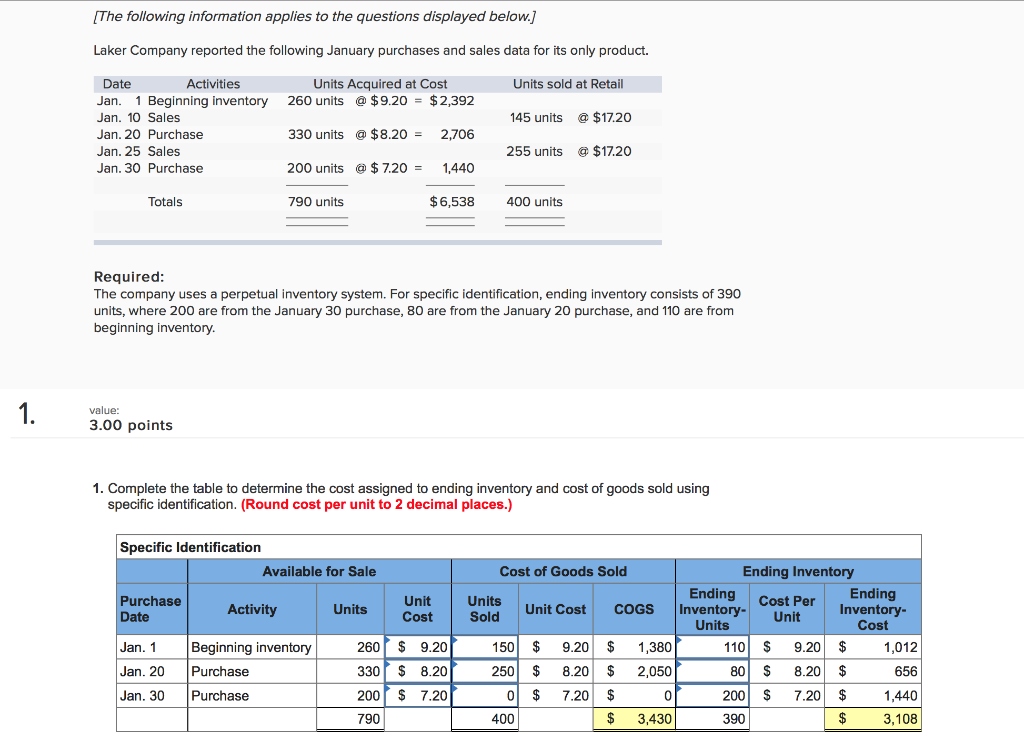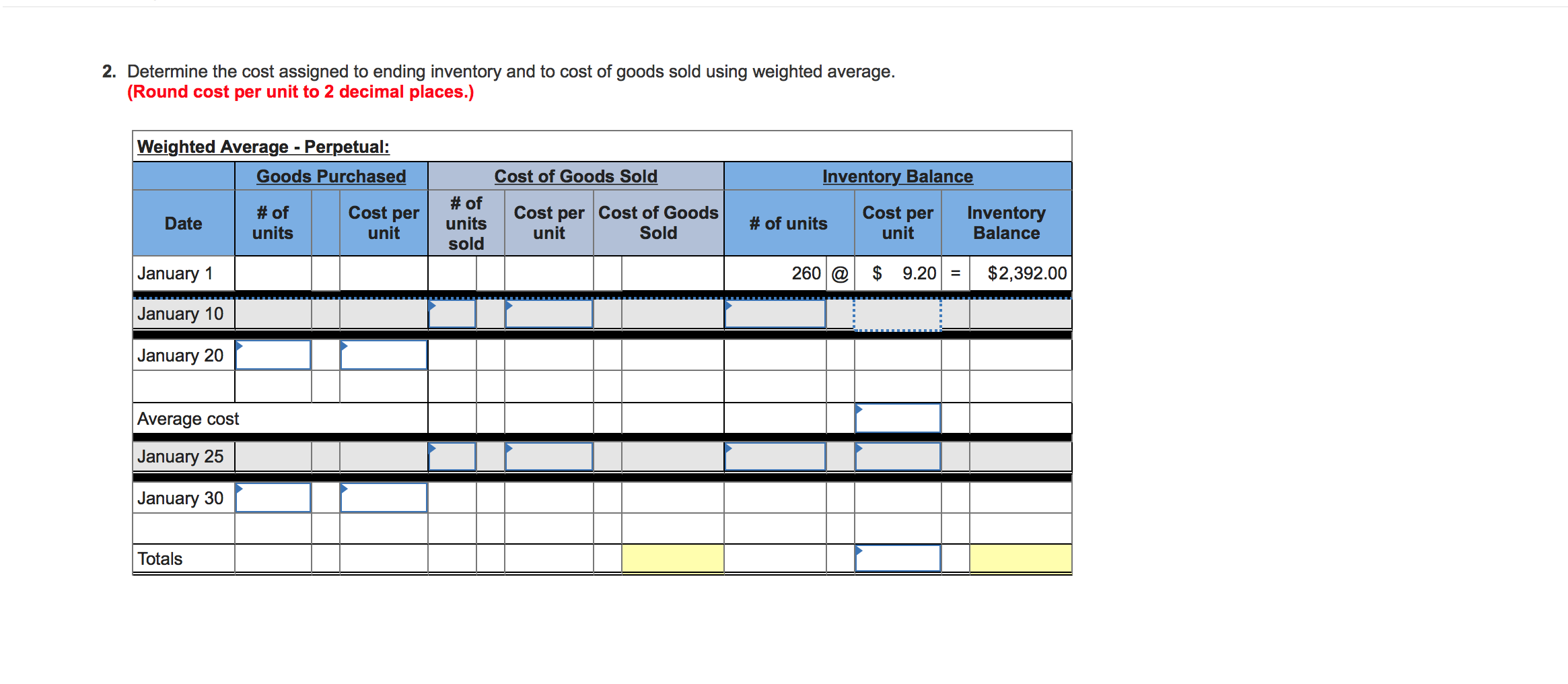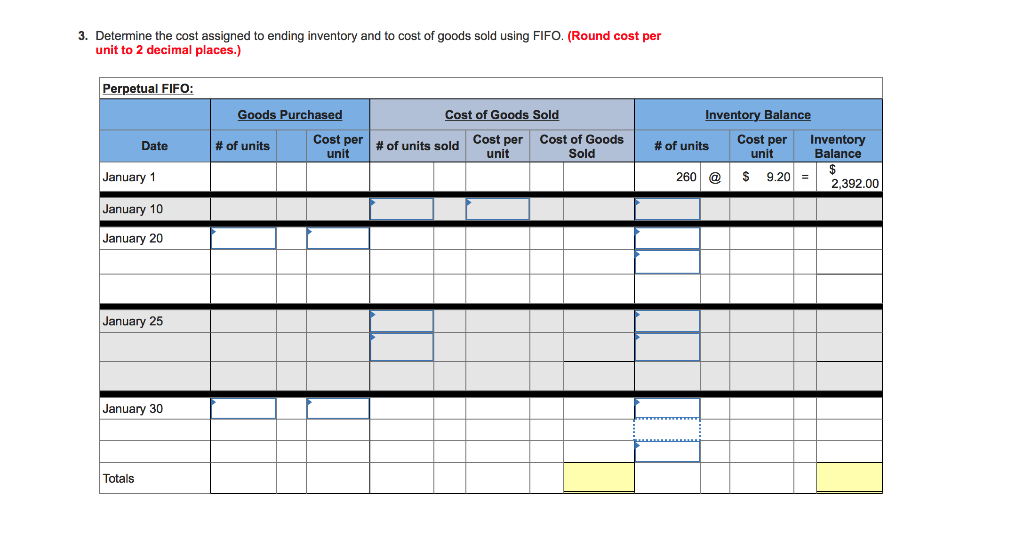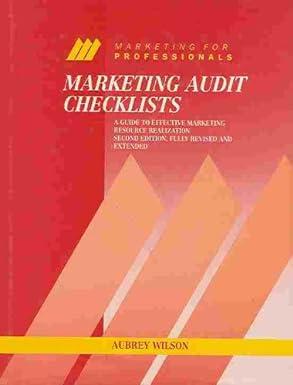


[The following information applies to the questions displayed below.] Laker Company reported the following January purchases and sales data for its only product. Units sold at Retail Units Acquired at Cost 260 units @ $9.20 = $2,392 145 units @ $17.20 Date Activities Jan. 1 Beginning inventory Jan. 10 Sales Jan. 20 Purchase Jan. 25 Sales Jan. 30 Purchase 330 units @ $8.20 = 2,706 255 units @ $17.20 200 units @ $ 7.20 = 1,440 Totals 790 units $6,538 400 units Required: The company uses a perpetual inventory system. For specific identification, ending inventory consists of 390 units, where 200 are from the January 30 purchase, 80 are from the January 20 purchase, and 110 are from beginning inventory. 1. value: 3.00 points 1. Complete the table to determine the cost assigned to ending inventory and cost of goods sold using specific identification. (Round cost per unit to 2 decimal places.) Specific Identification Available for Sale Purchase Date Activity Units Unit Cost Jan. 1 Beginning inventory Purchase Purchase Cost of Goods Sold Ending Inventory Units Ending Cost Per Ending Unit Cost COGS Sold Inventory Inventory Unit Units Cost 150 $ 9.20 $ 1,380 110 $ 9.20 $ 1,012 250 $ 8.20 $ 2,050 80 8.20 $ 656 0 $ 7.20 $ ol 200 $ 7.20 $ 1,440 400 $ 3,430 390 $ 3,108 Jan. 20 Jan. 30 $ 260 $ 9.20 330 $ 8.20 200 $ 7.201 790 2. Determine the cost assigned to ending inventory and to cost of goods sold using weighted average. (Round cost per unit to 2 decimal places.) Weighted Average - Perpetual: Goods Purchased Cost of Goods Sold Inventory Balance Cost per Date # of units # of units sold Cost per Cost of Goods unit Sold # of units Cost per unit Inventory Balance unit January 1 260 @ $ 9.20 = $2,392.00 January 10 January 20 Average cost January 25 January 30 Totals 3. Determine the cost assigned to ending inventory and to cost of goods sold using FIFO. (Round cost per unit to 2 decimal places.) Perpetual FIFO: Goods Purchased Inventory Balance Date Cost of Goods Sold # of units sold Cost per Cost of Goods unit Cost per unit # of units # of units Sold Cost per Inventory unit Balance $ 9.20 = 2,392.00 January 1 260 @ January 10 January 20 January 25 January 30 Totals









